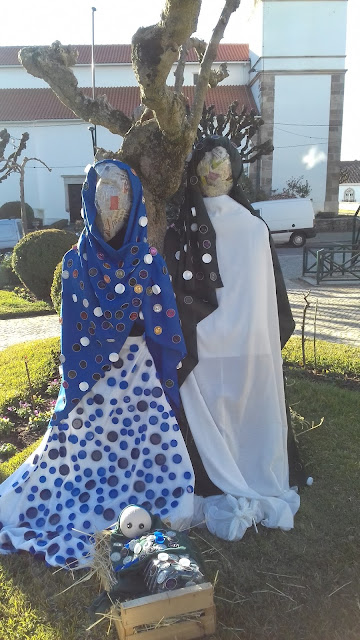Now we are in February it seems like the right time to write about a Christmas tradition in Portugal. The Presépio translated in Google as 'The Crib' is firmly routed in the Jesus in the Nativity and not the Pimp my Crib show on MTV.
The Presépio is traditionally a representation of the Nativity, from a simple Mary, Joseph and Jesus ornament arrangement at home on the mantle to a full on live procession with donkey, cattle and shepherds.
This year I spotted more representations of the Presépio around the district. It seemed to me that each town had two or three interpretations of this traditional celebration of the Nativity.
Presépio made from recycled materials seems to be the big hit this year, here are some that have caught my eye.
The Presépio is traditionally a representation of the Nativity, from a simple Mary, Joseph and Jesus ornament arrangement at home on the mantle to a full on live procession with donkey, cattle and shepherds.
This year I spotted more representations of the Presépio around the district. It seemed to me that each town had two or three interpretations of this traditional celebration of the Nativity.
Presépio made from recycled materials seems to be the big hit this year, here are some that have caught my eye.
 |
| All smiles and used car tyres... |
 |
| Tradition in a town church... |
 |
| Entrance to the Penela Presepio which included two iron cow statues humping (sadly not photographed) |
 |
| Very traditional interpretation outside the main church |
 |
| Made with re-cycled cloth and bottle tops... |
 |
| Cardboard cut outs - love the donkey! |
 |
| My personal favourite. String and recycled paper/cardboard in a tent. |
 |
| Amazing what you can do with some tarpaulin and gold spray! |

Comments
Post a Comment